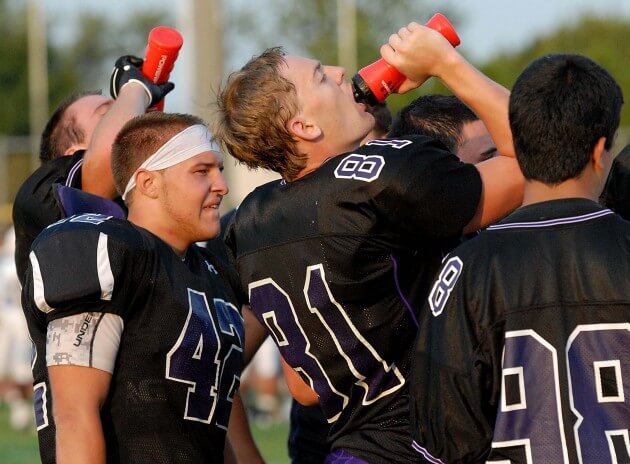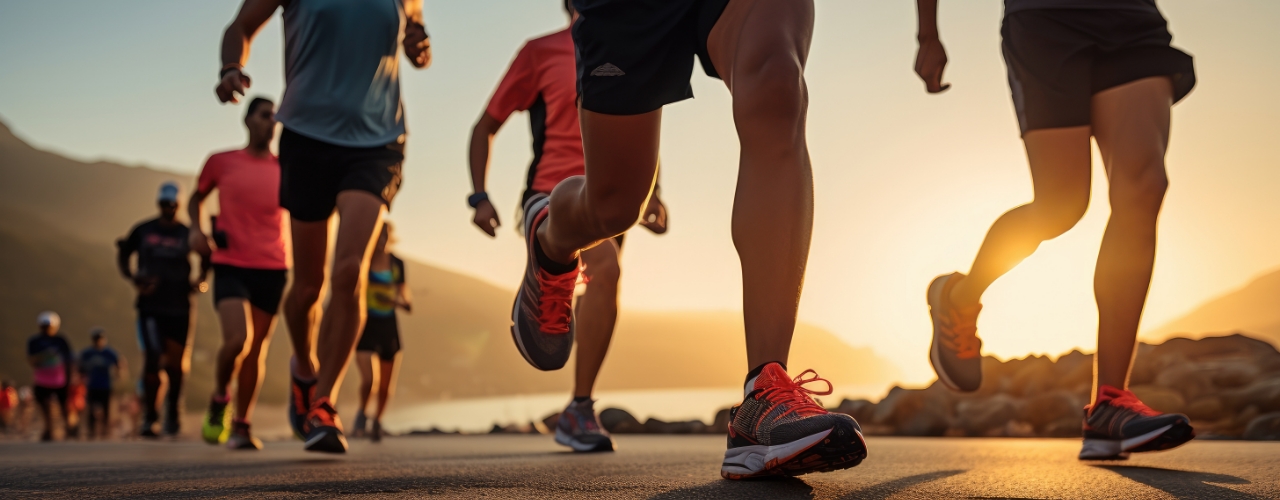The Importance of Hydration

As sports seasons get back into full tilt at the end of summer, there are many things that need to be taken care of in order to be prepared and have a successful season. Pre-participation exams, registration forms, buying equipment, and countless other tasks occupy our thoughts, but something that often gets overlooked is how to maintain hydration throughout the whole process. Hydration is one of the key factors that contributes to an athlete’s success, especially during this transition out of summer when temperatures can range from 60° to 105°.
There are several ways the body keeps itself from overheating during exercise. One of the most obvious ways is through sweating, where heat is removed from the body through evaporation. In order for this process to function properly, as well as keep other bodily functions going, the body needs an adequate amount of water. When heat dissipation is impaired and/or dehydration is settling in, an athlete is at increased risk of suffering from a heat illness. Coaches, athletic trainers, and athletes should be monitoring for signs and symptoms of heat cramps, heat syncope, heat exhaustion, and heat stroke. These symptoms include, but are not limited to, fatigue, headache, thirst, fainting, cramping, confusion, dizziness, and nausea/vomiting. While many of us have experienced feeling tired and a bit lightheaded from exercising, most of us do not have experience dealing with heat stroke, which is a medical emergency. Taking steps to adequately hydrate before, during, and after exercise, acclimatizing into training sessions, having medical staff present, and monitoring weather conditions to adjust practices accordingly can reduce the risk of these heat-related illnesses.
Proper hydration is also important for athletic output. In preparation for exercising, athletes should consume between 16 and 24 fluid ounces of water within the 2 hours before the practice or game, with an additional 7 to 10 fl. oz. of water 10 to 20 minutes prior. This helps ensure that you have a sufficient amount of fluid already circulating in the system before beginning to train.
During training, athletes should be consuming between 6 and 12 fl. oz. every 10 to 20 minutes, though this may be adjusted based on rules of competition. This may be a combination of water and a sports drink, as carbohydrate and electrolyte supplementation benefits performance, especially in training lasting longer than 60 to 90 minutes of continuous activity. If you are thirsty, you are already dehydrated, so a steady intake of fluids is important in maintaining hydration. It is important to note that in choosing a sports drink, it is important to avoid beverages that have a carbohydrate concentration greater than 8%, such as fruit juices, sodas, and carbohydrate gels. Caffeinated and carbonated drinks should also be avoided, as they stimulate excess urine production.
Following activity, it is recommended to replenish what was lost during exercise within the 2 hours following training. By monitoring an athlete’s weight before and after exercise, we can determine how much fluid needs to be consumed. This difference in weight is from a loss of fluid, not fat, and needs to be replaced for recovery and preparation for the next training session. Athletes should consume 16 to 24 fl. oz. per pound lost, and may include water, sports recovery drinks, and chocolate milk.
It is important for an athlete to find where they lie in these recommended ranges, as each athlete has different needs based on metabolism, body type, sport/position, type of training, etc. Drinking too much water can lead to problems as well, so it is helpful to have a balance of water and beverages with carbohydrates and electrolytes, and to keep track of the amount of fluids being consumed. A simple trick to proper hydration is to clearly mark a bottle in 100mL/3-4 fl. oz increments. This provides a visual reminder of how much to drink throughout training.
Measuring body weight can provide insight into an athlete’s hydration status. Studies have shown that a decrease in body weight greater than 2% may negatively affect athletic performance, as well as cause headache, dizziness, weakness, nausea, irritability, or muscle cramps. This makes proper hydration before, during, and after exercise even more important.
When weight monitoring is not practical, you can monitor the color and volume of your urine. If you are well hydrated, your urine should appear clear to light yellow. Dehydration leads to darker yellow urine, often with a decrease in volume as well. This is a sign that you are not consuming enough fluids, or that you lost a lot of fluid during exercise that needs to be replaced.
In the world of sports, coaches often preach the mantra, “control the controllables.” While we cannot control the weather, field conditions, or the opposition, we can control what we put into our bodies to maintain proper hydration and optimal athletic output. Be sure to discuss any questions you may have regarding heat illness and hydration with your healthcare provider.
1 comment
Comments are closed.


Your point of view caught my eye and was very interesting. Thanks. I have a question for you.